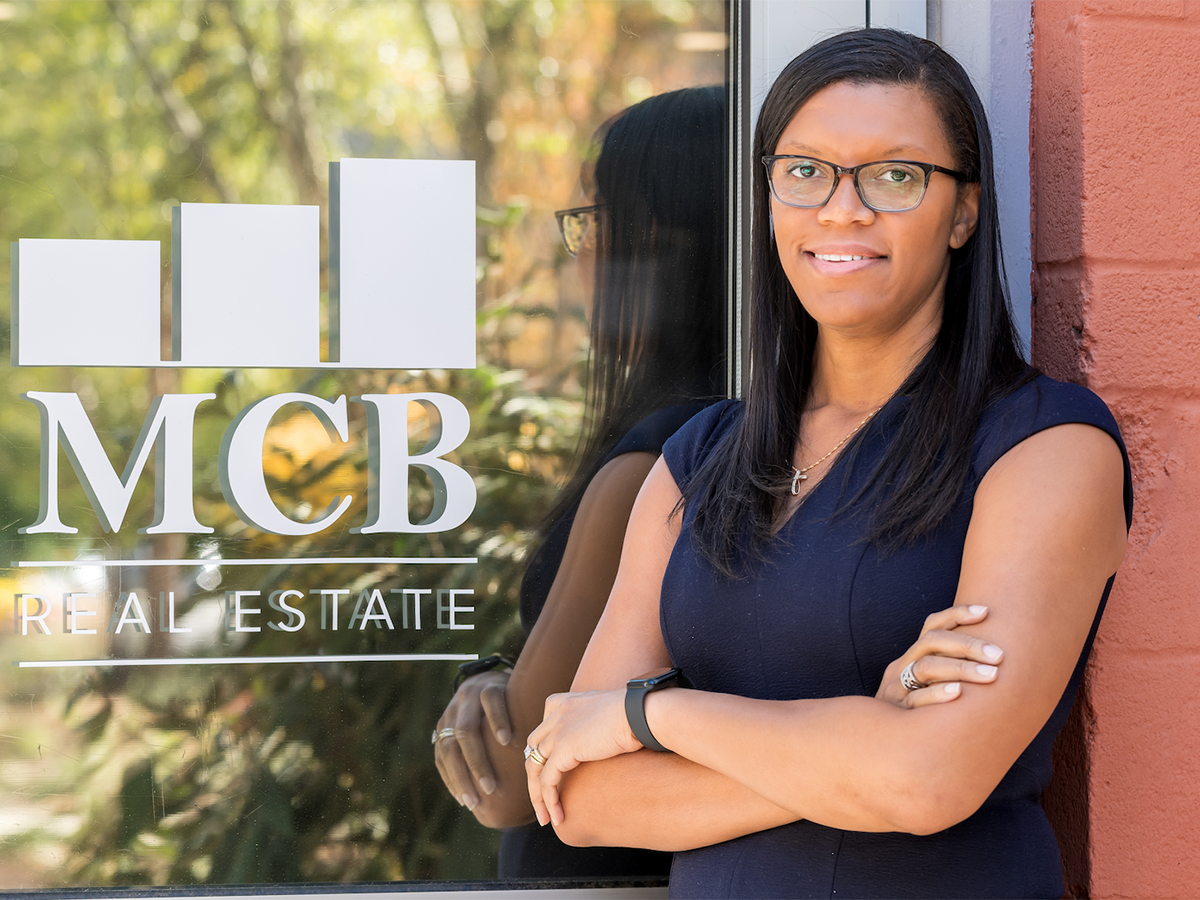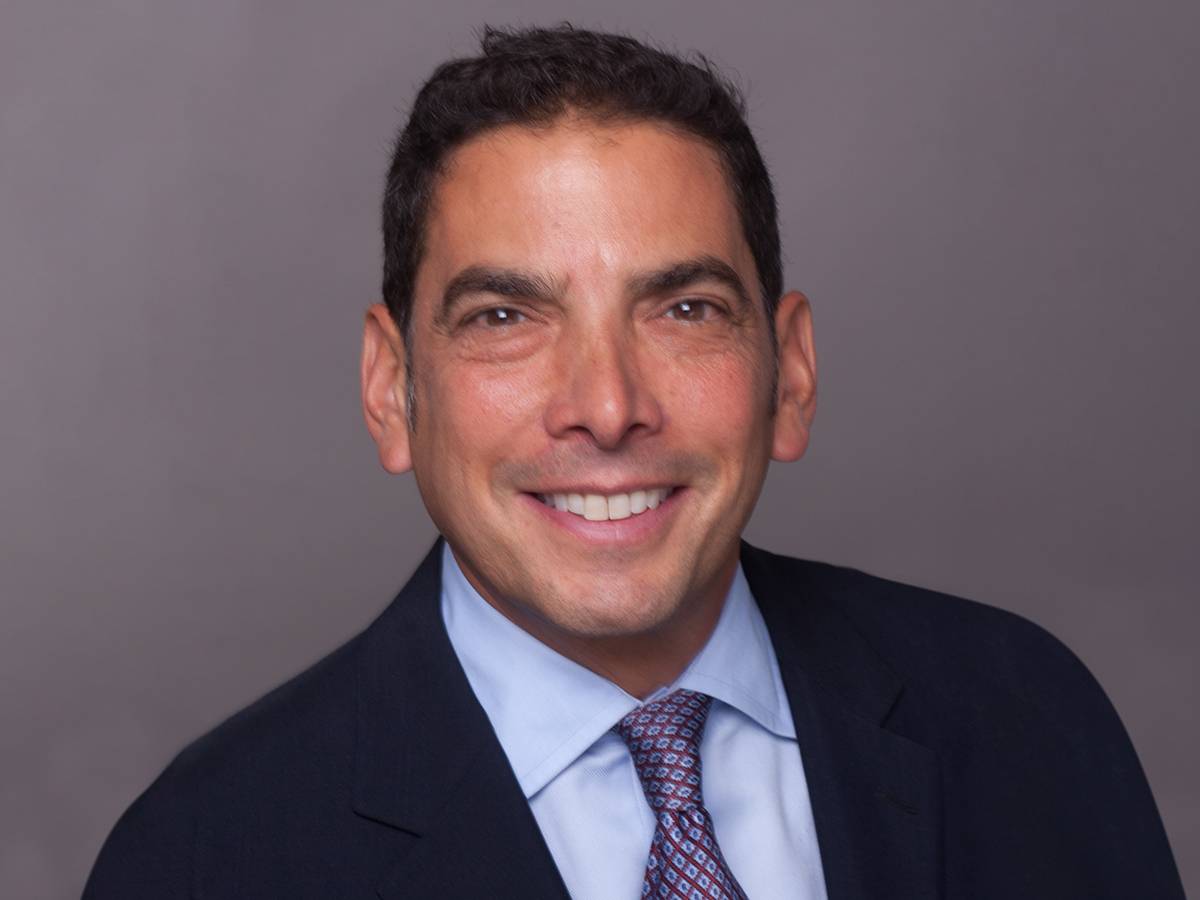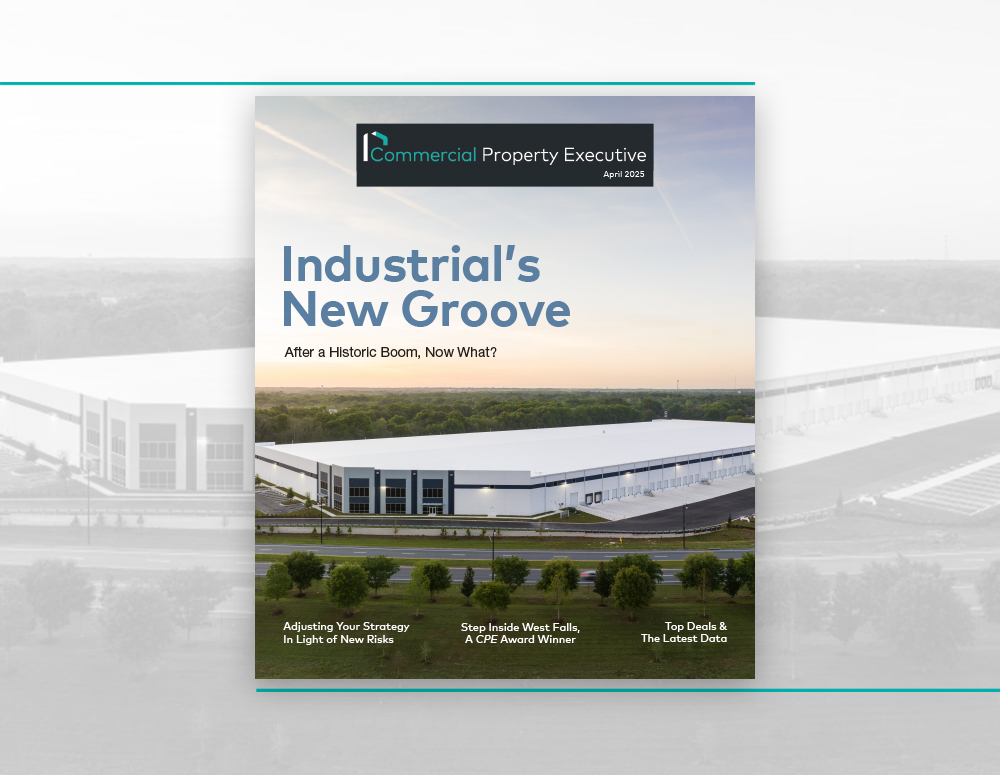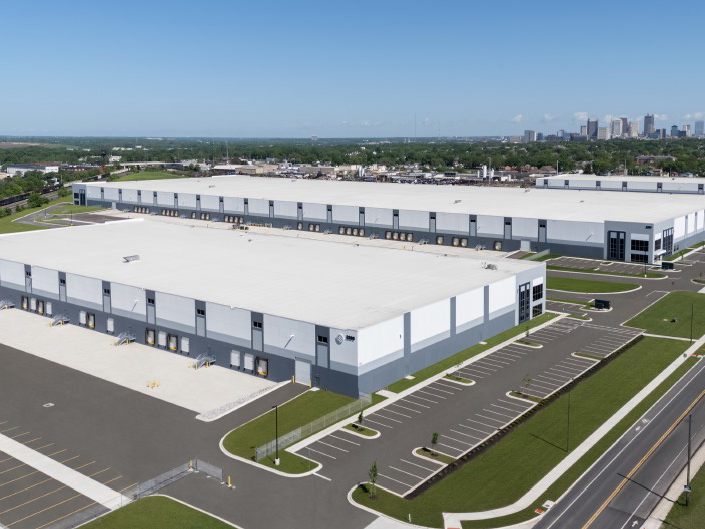CPE’s Midyear 2024 Outlook Roundtable
What’s shaping the CRE industry? Where do opportunities lie? These execs have the answers.
This whirlwind of a year is only two quarters in. From yet-defined obstacles to where opportunity will pop up next, there’s a whole lot left on the table. To find out what’s in store, Commercial Property Executive gathered a solid lineup of CRE leaders from across industries.

Here’s what Richard Barkham, global chief economist, CBRE; Gina Baker Chambers, president, MCB Real Estate; Joseph Iacono, CEO, Crescit Capital Strategies; Matthew Astrachan, vice chairman, JLL New York; Jake Levin, principal, KLNB; Jim Caronna, principal, KLNB; Jason Muss, president, Muss Development; and Soultana Reigle, head of U.S. equity, PGIM Real Estate, had to say.
What is the most notable trend shaping CRE today and how will it play out for the rest of the year?
Barkham: From a capital markets perspective, the most notable trend is the yield on the 10-Year Treasury continuing above 4 percent (4.49 percent at time of writing). This is keeping the real estate cost of capital high and investors very much on the sidelines. Hence, first-quarter U.S. investment sales were down by 25 percent compared to the same period in 2023. Cap rates, although nearly bottomed, continue to drift out. We expect the yield on the 10YT to fall over the course of 2024 and into 2025, as inflation eases and the Fed Funds rate starts to fall. This will allow real estate prices to firm and transactions to pick up in the second half of 2024.
From a fundamentals’ perspective, the key trend I see is the sharp drop in CRE construction starts. This is in industrial, multifamily and offices and is in response to higher cost of construction finance, lower values and some uncertainty in the economy. The lack of new construction means that a lack of good quality space will emerge in 2025 and intensify in 2026. This will put upward pressure on Grade A rents.
Muss: The most notable trend is the lack of available capital from traditional lenders and equity providers. This ultimately creates an environment where only the most committed and knowledgeable operators get deals done. The lack of confidence in CRE as an investment is a partial undoing of years of progress where real estate became a larger percentage of the portfolios of pension funds, community banks, private equity firms and family offices—the effects of which will be felt well past this cycle.
READ ALSO: Office Absorption to Stay Negative Through 2025
Reigle: The industry is in the middle of a redefining of what constitutes a “core” real estate investment. Inclusion criteria for NCREIF’s Open End Diversified Core Equity index changed in the first quarter of 2024 and now allows, in a most extreme scenario, for open-end core real estate funds to have up to 50 percent of their investments weighted to alternative property types—those outside of the “big four” sectors of office, industrial, multifamily and retail—up from just 25 percent previously.
This will change the overall real estate investment landscape as it will increase the amount of capital pursuing alternative sectors. In turn, this revised definition of core also means that the value-add investment landscape will change, as value-add investors will follow suit and widen their investment remit as well to include more alternatives. Additional depth in the core market means additional liquidity and certainty of exit for value-add investors in the alternatives space. This potential wave of capital, coupled with strong fundamentals in most of the alternative sectors, means a positive outlook for the alternative space more broadly.
Iacono: The impact of remote work has transformed the industry on a mass scale. But even with a significant reduction in the number of office workers occupying on a full-time basis, the idea of converting office space to other uses will continue to be more of a conversation than a trend, given the massive basis adjustment that needs to happen to justify the expense and the zoning and logistical hurdles that need to be overcome. I do expect more occupancy pressure in the office sector, albeit some markets like NYC are experiencing some uptick in return to office.
READ ALSO: Office Sector Adapts Amid Market Shifts
Chambers: Dislocation in the capital markets continues to disrupt transaction volumes and price discovery in CRE. The mortgage markets remain challenged by fewer active lenders and volatile commercial mortgage-backed securitization executions leading to higher rates on the underlying mortgages. Equity capital markets are challenged by high investor return expectations and low property level returns with tight cap rates across the most desirable sectors. This trend is likely to persist throughout 2024, with limited clarity on the near-term direction of interest rates and general uncertainty around the broader U.S. economy.
What are the biggest challenges the industry will face in H2?
Iacono: Declines in office demand, interest rate increases and operating expenses that outpace rent growth are all challenging issues, but in combination, have become destabilizing issues. In particular, don’t underestimate the impact of insurance costs. We’re already seeing the impact in various markets.
Barkham: The main challenge is the elevated cost of debt. We estimate that $1.5 trillion of real estate debt, raised when interest rates were much lower, will mature this year and next. Most of that debt will be refinanced or extended, but some foreclosures will take place, and banks’ profitability will be reduced by the need for provisions or charge offs. Thus, although debt markets are open and functioning, banks will remain very cautious in extending loans to real estate. This situation could last for at least another 12 months, possibly 18.
Levin: Retailers will need to produce historically strong sales to achieve their necessary returns due to increased rents and higher interest rates. With consumer confidence slipping to a six-month low, retailers must focus on strong operations and an exceptional experience for their customers.
Caronna: Powering new buildings is challenging since getting electric equipment has extraordinarily long lead times. In addition, going through regulatory hurdles such as meeting life, safety and fire requirements along with building and use & occupancy permits take long periods as government inspectors are in short supply and schedules remain backed up.
READ ALSO: Where to Find Industrial Opportunity
Reigle: The real estate market has a chicken-and-egg problem now: Transaction activity cannot fully pick up until debt availability and terms improve, but debt availability and terms are unfavorable partly because there is no transaction activity with which their loans can be repaid and redeployed back into the market. In the second half of this year, as real estate investors come off the sidelines and valuations bottom out, those investors who have the strongest existing relationships with banks and other lenders will be in the best position to navigate what will continue to be a tough financing environment.
Why is (or isn’t) this a good time to get active and make deals happen?
Muss: This is still a very good time to get into CRE. The fundamentals of most sectors are still strong. There is a lack of retail and residential product, and the economics of new construction are still not there in most areas of the country—so if you can find a deal that pencils out, you’re likely to make your numbers in the longer run. The need to amortize most loans and put more equity into transactions will further insulate deals from unwarranted risk.
Astrachan: Now is a good time to consider leasing office space in Manhattan while there are still superb high-quality buildings with owners eager to negotiate terms. Competition among landlords has led to ongoing efforts to upgrade buildings with the type of amenities that are helping employers not just get their staff back into the office but to attract and retain new talent.
Iacono: Now is a good time to be a lender, as returns are equal to or exceed modeled equity returns. It’s also a good time to be a buyer, if you can acquire product at a price that is reflective of the current market. Supply will be constrained in many markets as new construction has mostly come to a halt. This should be positive for revenues and occupancies.
What has changed from the beginning of 2024?
Reigle: Valuations are closer to the bottom than they were at the beginning of this year. Despite interest rates remaining high, we are seeing evidence of green shoots among many investors who believe we are at or near a trough and that the time is now to start re-entering the market. While we still need the debt markets to loosen up, we are starting to see evidence of equity capital ready to get off the sidelines. This is a meaningful difference from where we were at the beginning of this year.
Levin: The year started strongly, with retailers confident in cooling inflation and largely positive comp sales, so it sure feels like it’s been a six-month sprint to secure high-quality real estate for our clients. Sourcing off market and pre-market opportunities remains critical to growth for our clients.
Caronna: Industrial clients are now better understanding the slowdown in the market between the last quarter of 2023 and mid-second quarter of 2024. They are being more measured in their approach to growth and now have more viable choices when it comes to renewing or expanding their space.
Looking ahead to the second half, what are your predictions for CRE?
Muss: The further away we get from the rapid run-up we have seen in interest rates the longer we all will have had to adjust accordingly and figure out how to make deals happen even in a challenging environment. As a result, we will see transactions increase dramatically, especially in the last quarter of 2024.
Chambers: The most significant change year-to-date is the stabilization of the CMBS market and slightly improved mortgage borrowing costs. A more efficient borrowing market will likely improve transaction volumes. For 2024, MCB expects continued volatility in rates, with a general positive trend that helps facilitate a more active transaction and refinancing market.
READ ALSO: CMBS Demand Is Rising Amid Mounting Delinquencies
Levin: More of the same. We see a little more optimism for CBD retail product; but in general, the market is bullish on well-positioned grocery-anchored centers and strips.
Caronna: The industrial market will continue to moderate for the balance of the year, but once demand moves up and existing product is absorbed by the second quarter of 2025, we expect rates to begin their march upward along with occupancy levels.
Barkham: High interest rates will have an impact on the consumer, so we should see that economy start to slow and this will impact sentiment. We also have seen some encouraging trends on office leasing in some of the larger markets, NYC, SF and Seattle. So, office leasing is picking up and that should get stronger as companies see that Grade A space availability is going to be much less in 2025. Pent-up demand in the office sector will also play a role.
Where do you see opportunities for investors throughout the rest of this year?
Chambers: We believe that the most interesting opportunity today, which is likely to persist for the balance of the year, is the dislocation of valuation in the public markets versus private markets. MCB believes there are several publicly traded REITs that are trading at a material discount to private market net asset values. Even when accounting for transaction costs, there still appears to be meaningful value dislocation in the public markets. An added advantage to investing in REITs is instant liquidity and low transaction fees.
Muss: Distressed properties—where some want out and others do not. Personality, reputation and negotiating skills will all go farther than they have in years.
Reigle: The investment opportunities that we do have are attractive now. We’re way past the point where only debt originations and recapitalizations make sense. Buy-and-hold unleveraged returns are in the high single-digits in high-conviction sectors including non-traditional residential and necessity retail, and that’s under the assumption that cap rates never go down from where they are today.
Besides waiting on the Fed, are there any other events or concerns that could decide this year’s outcomes?
Barkham: The global economy is picking up. We expect inflation to trend down. But there is the small matter of the U.S. Presidential Election, which may cause people to delay on their investment decisions. That would be a mistake because there are good opportunities out there. The savvy investors will act while others are dithering over political outcomes that will not have any influence on the real estate market.
Astrachan: Increasingly, occupiers are focused on carbon net-zero goals and meeting the demands of a new generation of workers for a high sustainability workplace. Of 405 occupiers surveyed for JLL’s recent Decarbonizing the Built Environment report, 39 percent had adopted a Science-Based Target, which is the gold standard for corporates making a net zero commitment. An additional 30 percent expected to adopt a Science-Based Target by 2025, bringing the total figure to 69 percent by 2025. This corporate commitment will drive increased retrofitting of existing buildings to meet minimum decarbonization targets.
Muss: The sheer size and scope of some of the private equity deals will continue to affect CRE beyond what we have seen in prior cycles. Real estate will continue to be local—but larger players are increasingly operating in the smaller arenas previously reserved for the hyper-local operators of generations past. This has affected and will continue to affect the market in unanticipated ways.















You must be logged in to post a comment.